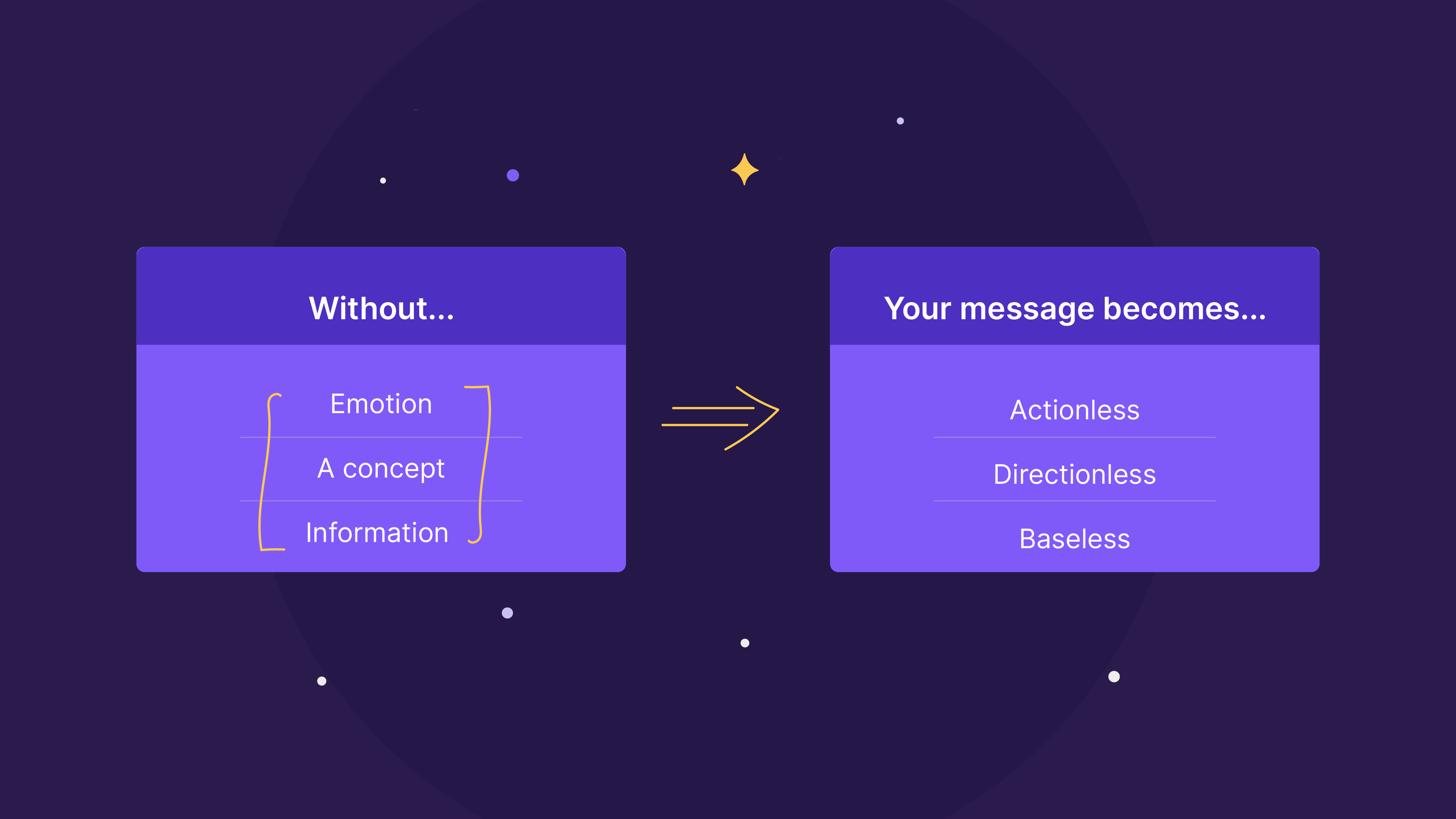16 May 2024
Information overload in consulting presentations has become the norm, so standing out as a presenter isn’t so much about your data as it is about how you share it. The crown jewel of any presentation is storytelling. The power to weave information into engaging narratives is what sets the strongest presenters apart. Here, we will explore storytelling frameworks that help consultants work into their presentations and learn what it takes to turn data into captivating, and more importantly, persuasive, stories.
Why is consulting presentation storytelling prevalent now?
Storytelling is a crucial skill to have as a presenter and as a consultant. Shaping raw statistics, figures, revenue streams, and other forms of data requires narrative skills for proper business decisions. Effective business communication has evolved beyond analytical analysis and into creative storytelling. This is a shift that has called for consultants to both understand their data and transform it into compelling narratives. The ability to communicate a story that resonates and persuades sets a presenter apart from the rest, meaning that mastering storytelling has become an essential part of any consultant’s toolkit.
Consulting storytelling flows in PowerPoint
To craft a more fluid narrative, there are two main concepts for storytelling flows to apply to a consulting presentation: horizontal flow and vertical flow. These two structures can help consultants organize their ideas to reach their audience through a coherent flow.
Horizontal flow
In a horizontal flow, the headers for each slide communicate the different points of a storyline. The logic of the flow is that it moves across slides. Often in consulting presentations, each slide would require a “lead-in,” usually the header, to share the main takeaway. The header or lead-in should communicate the slide’s idea without reading the rest of the content. That way, when you read the outline of a presentation, you can spot the overall storyline.
A good way to recognize if your presentation has a horizontal flow is to revisit all of the headers. Are you still able to identify the story by only reading the titles? If not, then you might need to rethink the logic of your slides.
Vertical flow
In a vertical flow, the header or lead-in should be supported by further data and context in the slide’s body. The slide’s body in this case should have insights expanding on the header, but it should also try and maintain simplicity to not overwhelm the viewer. There must be a balance that takes the audience into account.
Yes, you want to provide evidence for your claim, but you also need to be mindful of how you support your main message, so only include information that reinforces your point. The vertical flow is also a matter of coordinating the titles with the content for clarity.
The purpose behind horizontal and vertical flows
Approaching consulting presentation storytelling through horizontal and vertical flows is useful for two main reasons. The first is that it becomes easier to identify gaps in your story’s logic when it is outlined within this framework. The second reason is to ensure that each argument you make is supported with data at every stop within your storyline. These flows help keep the story within a situation, complication, and resolution structure that maintains a logical storyline.
The tenets of persuasive consulting presentations
If you’re facing an upcoming presentation where you are trying to persuade, consider including the following tenets. These are the aspects that make a presentation persuasive to any audience:
The informational tenet
If your data isn’t strong enough, your message loses its credibility. No one will trust the message if there isn’t information powerful enough to back it up. Including relevant and factual information bolsters your credentials and helps build trust with the audience. Plus, it gives the audience a deeper context for your main message. Usually in business, this tenet is a given, what truly creates a persuasive presentation relies on the next two tenets.
The conceptual tenet
Relying on a primary concept guides your audience as they navigate your information. More specifically, this is the story that frames your information, helping listeners make sense of the information and engage with it. Grounding your presentation’s message and supporting arguments in a narrative gives it direction; the arc keeps your audience interested.
The emotional tenet
Emotion is an underrated but crucial factor in crafting a persuasive message. Although it is tricky to include, the impact it has can channel an audience into action. One way to incorporate emotion is through the “character” of your story, making the audience care about them. As they listen to the character’s conflict, their emotions will be engaged. Using emotion is how stories bring a touch of humanity to your data.
By constructing a narrative that effectively fuses your information into the story, you create a compelling and convincing perspective that no audience can resist. Integrating storytelling into a consulting presentation is an indispensable part of presenting in a data-heavy world. Remember, the most memorable and impactful stories are the ones that relate to listeners on a personal level.







